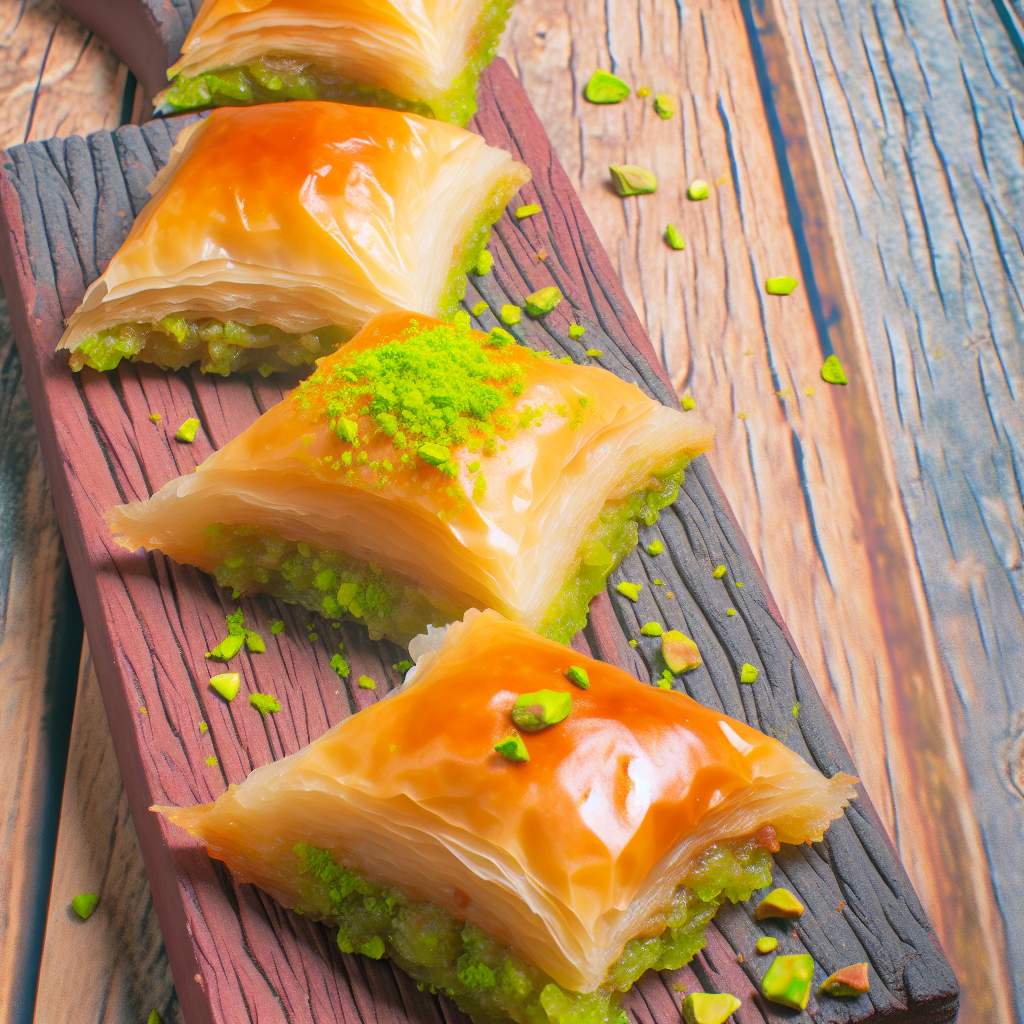Imagine biting into layers of flaky, golden phyllo dough, each one infused with the fragrant aroma of honey, cinnamon, and nuts. This is the essence of baklava, a Middle Eastern pastry that has captivated taste buds for centuries. Originating from the Ottoman Empire, this decadent treat has traversed borders and cultures, becoming a beloved dessert in many regions of the world.
Baklava is more than just a dessert; it’s a culinary masterpiece that blends the rich flavors of the East with the delicate artistry of pastry-making. Each bite unveils a symphony of textures and tastes, from the crunch of buttery layers to the velvety smoothness of the nut filling. It’s a dessert that demands to be savored, allowing the flavors to linger on the palate long after the last crumb has been devoured.
The origins of baklava can be traced back to the ancient lands of the Middle East, where the combination of nuts, honey, and pastry was a cherished tradition. As the Ottoman Empire expanded, so did the popularity of this dessert, with each region adding its own unique twist. From the pistachio-laden variations of Iran to the walnut-studded delicacies of Greece, baklava has become a canvas for cultural expression.
One of the hallmarks of a truly exceptional baklava is the painstaking process of its preparation. Skilled pastry chefs meticulously layer paper-thin sheets of phyllo dough, brushing each layer with clarified butter to ensure a flaky, crisp texture. This labor-intensive process is a testament to the dedication and artistry required to craft this beloved dessert.
Beyond its irresistible taste, baklava holds a special place in Middle Eastern culture. It is often served during celebrations and special occasions, symbolizing hospitality and the joy of sharing. Whether it’s a lavish wedding feast or a cozy family gathering, the presence of baklava signifies the warmth and generosity that lies at the heart of Middle Eastern traditions.
As you delve into the world of baklava, you’ll discover a myriad of variations and interpretations. Some opt for a dense and rich filling, while others prefer a lighter, more delicate approach. Regardless of personal preferences, one thing remains constant: the ability of this dessert to transport you to a realm of indulgence and cultural exploration with every bite.
To truly appreciate the magic of baklava, one must not only savor its flavors but also embrace the rich tapestry of history and tradition that surrounds it. Each layer, each nut, and each drizzle of honey tells a story of ancient civilizations, culinary ingenuity, and the enduring power of food to bring people together.
Baklava Recipe:
Ingredients:
- 1 pound phyllo dough, thawed according to package instructions
- 1 cup unsalted butter, melted
- 1 pound walnuts or pistachios, finely chopped
- 1 teaspoon ground cinnamon
- 1 cup sugar
- 1 cup water
- 1 cup honey
- 1 lemon, juiced
Instructions:
- Preheat your oven to 350°F (175°C).
- Prepare the nut filling by mixing the chopped walnuts or pistachios with cinnamon and 2 tablespoons of sugar. Set aside.
- Unroll the phyllo dough and cover it with a damp towel to prevent it from drying out.
- Brush the bottom of a 9×13 inch baking pan with melted butter.
- Layer 8 sheets of phyllo dough in the pan, brushing each sheet with melted butter before adding the next.
- Spread half of the nut filling evenly over the phyllo layers.
- Layer another 8 sheets of phyllo dough, brushing each sheet with melted butter, then spread the remaining nut filling over the top.
- Finish with a top layer of 8 more phyllo sheets, brushing each with melted butter.
- Using a sharp knife, cut the baklava into diamond or square shapes, cutting through all the layers.
- Bake for 30-40 minutes, or until the top is golden brown.
- While the baklava is baking, make the syrup by combining the remaining sugar, water, honey, and lemon juice in a saucepan. Bring to a boil, then reduce heat and simmer for 15 minutes.
- Once the baklava is out of the oven, immediately pour the hot syrup over the top, allowing it to soak into the layers.
- Let the baklava cool completely before serving.
Enjoy this heavenly treat, savoring each bite as a celebration of the rich cultural heritage and culinary mastery that baklava represents.
